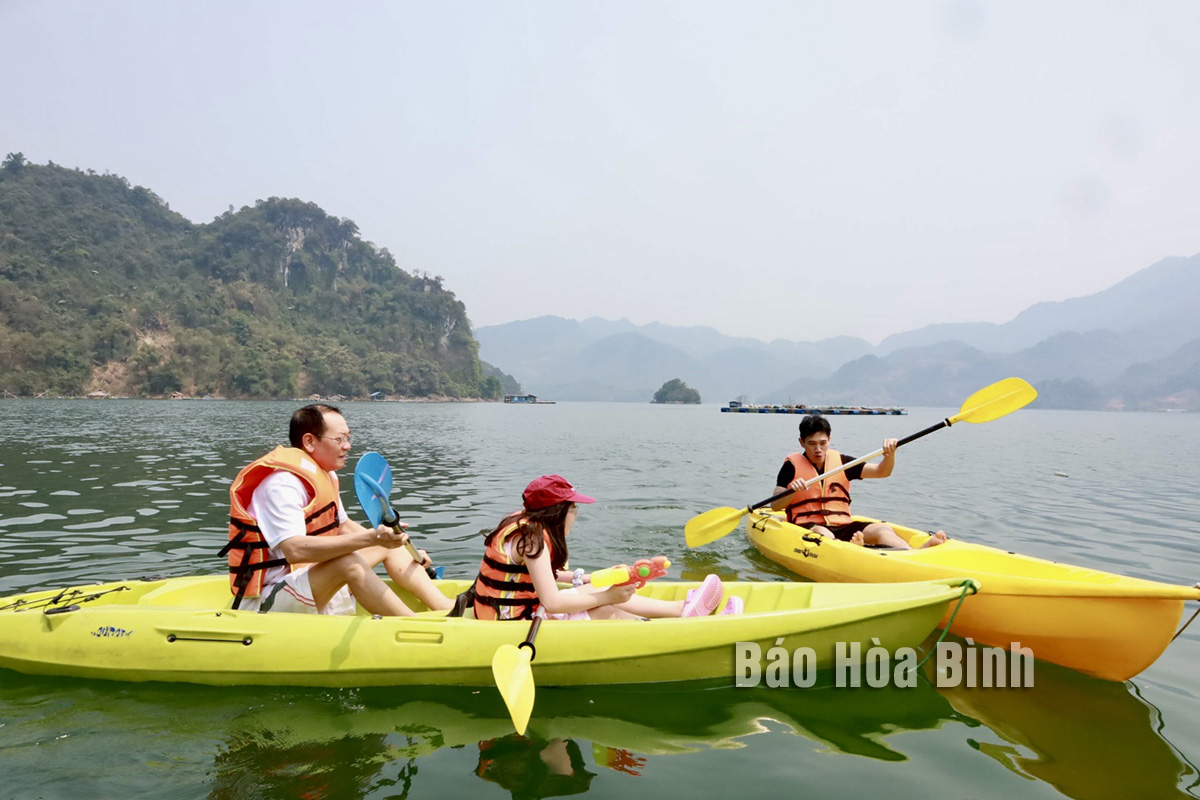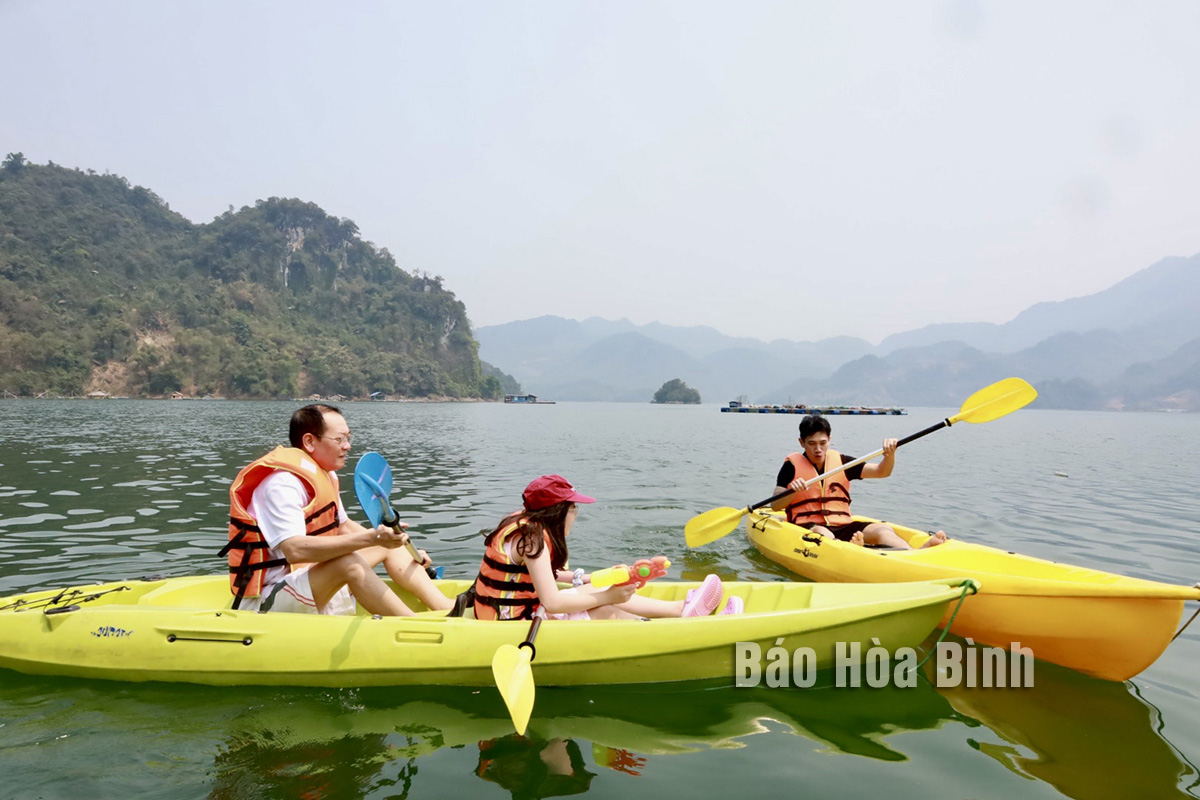
Da Bac district, bestowed with stunning landscapes, is developing ecological and resort tourism offerings. Several tourist sites, put into operation this year, has attracted throngs of high-spending and young domestic visitors.
Mo village in Hien Luong commune, Da Bac
district, offers visitors kayaking service on Hoa Binh Lake.
Hien Luong Eco in Mai Ngu hamlet, Hien Luong
commune, which became operational in April, has impressed visitors with its
beautiful lake view, vibrant flower field, lush gardens, kayaking service, and
local specialties.
Mo village and Xoan retreat in nearby Mo hamlet,
both boasting outdoor swimming pools, gardens, bars, and playgrounds for kids,
have been ideal weekend getaways for its sound services and rational
accommodation prices.
Meanwhile, Maida lodge nestling in a charming
village in Doan Ket commune offered top-notch resort services to visitors with
11 private bungalows, six comfortable hotel rooms, and an infinity swimming
pool. Every little corner there is meticulously cared for, adorned with
tropical greenery and seasonal blooms.
According to Nguyen Van Toan, head of the
district’s bureau of culture and sports, the district has paid due attention to
promoting the potential of the Hoa Binh Lake tourism site and cultural traits,
helping generate jobs for local residents and bolster economic growth.
The district now counts 17 homestays, 11 lodging
facilities, and three two-star hotels. During January – June, it bagged nearly 64
billion VND (2.58 million USD) from servicing more than 145,000 visitors,
including nearly 4,600 foreigners.
Da Bac has focused on developing ecological and
resort products, attracting projects in the area as well as offering kayaking,
trekking, and biking services for green and sustainable tourism development, he
said, adding the district has promoted connectivity with tourist destinations
in Phu Tho and Son La provinces to attract more visitors.
A diverse chain of eco-tourism and resort destinations concentrated in Hoa Binh city and the districts of Tan Lac, Da Bac, and Luong Son… Along with the launch of several key high-quality resort tourism projects, these developments have reshaped the landscape and enhanced the appeal of Hoa Binh as a travel destination.
Boasting diverse terrain, a mild climate, and rich natural resources, Cao Phong district is increasingly asserting its place on Vietnam’s tourism map, attracting both domestic and foreign visitors. The district is renowned for its stunning landscapes, majestic mountains, a crystal-clear hydropower lake, and the unique cultural identity of local ethnic groups.
With its pristine landscapes, unique cultural heritage of Muong ethnic minority, and an expanding range of visitor experiences, Tan Lac district of Hoa Binh has fast become a captivating destination for both domestic and international tourists.
Until now, Sung village in Cao Son commune, Da Bac district remains the only Dao ethnic community in Hoa Binh province to develop a community-based tourism model. Beyond its untouched natural landscapes, cultural identity serves as the cornerstone attraction for visitors.
Alongside the diverse cultural identities of the Kinh, Muong, Tay, Thai, Dao, and Mong ethnic people, Hoa Binh province is also renowned as the "capital" of the northwestern Vietnamese cuisine, offering unique and distinctive dishes. At festivals, during Lunar New Year (Tet), or on significant family or community occasions, special dishes are prepared, leaving a lasting impression on visitors.
A Phong Linh (Yellow Tabebuia) flower garden in Thang village, Thach Yen commune, Cao Phong district is currently in full bloom, drawing a large number of visitors.



